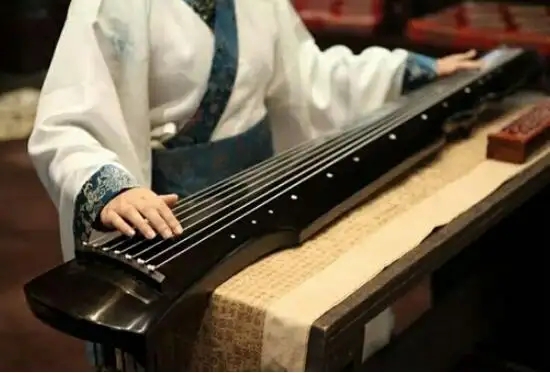The application of the beauty of harmony in Guqin in performance
337 views · Organized by 尘夕 on 2022-06-13
The aesthetics of the guqin is "neutralization", so what should it be about playing?

The aesthetic pursuit of guqin should take neutrality as beauty, and in order to neutralize beauty, excessive exaggeration and extremes should be abandoned. Here we must understand a truth, not to say that imaginative exaggerated performance and passionate performance are wrong, but that this style of performance is not suitable for guqin. We learn guqin not only to learn the performance of a musical instrument, but also to learn a culture and a neutral attitude. Therefore, when learning the guqin, first of all, it is necessary to establish this kind of aesthetics. First, you must know that the musical instrument you are learning is the guqin, and then use the unique aesthetics of the guqin to standardize your performance and performance. In the performance, we should pursue: Zhongzheng and peace, gentleness and uniformity. Don't overemphasize contrast, and don't need too much processing. Because the fingering of the guqin itself has been naturally prioritized, and the cadence is rhythmic. Attention should be paid to the pursuit of the "true color rhyme" of the guqin. As the saying goes, "Music can't be fake" and "I play my heart with my hands", just play it according to the original intention of the qin music and your own understanding of the music.
Involving musical instruments
Guqin (pinyin: Gǔ Qín) is a traditional Chinese musical instrument with a history of at least 3,500 years. Guqin is also known as Yaoqin, Yuqin and Seven-stringed Qin. The guqin has 13 emblems that mark the rhythm, and is also a ritual and musical instrument. It belongs to the silk in the octave. Guqin has a wide range, deep timbre and long aftertone.
Guess you like
Organized by 未知领地 on 2024-03-17
When selecting a guqin, the timbre quality is often the primary criterion to judge its quality, because the timbre is not only related to the artistic expression of the guqin, but also deeply rooted in the unique pursuit of music aesthetics in traditional Chinese culture. Here are some basic timbre elements to consider when choosing a guqin.
read >>
Organized by 卷鹅 on 2024-03-14
With the arrival of the hot summer, for the guqin friends, how to do a good job in the hot and humid season of guqin maintenance is particularly important. Guqin as a traditional Chinese wooden chord instrument, its material is very sensitive to changes in temperature and humidity, so the correct maintenance of guqin in summer can not only extend the life of the instrument, but also maintain its pure timbre.
read >>
Organized by 雨童 on 2024-03-14
Guqin, as an ancient and rich cultural instrument in China, its playing techniques pay attention to the integration of body and mind, rhythm and emotion. In the process of learning Guqin, there is a set of sixteen words that condense the wisdom of countless piano players. They are: "Light, loose, slow, even, Tian, light, elegant, beautiful, bright, mining, quiet, far, ancient, clumsy, middle, and".
read >>
Organized by 迦夜 on 2024-03-13
Guqin, as one of the oldest plucked instruments in China, the beauty of its rhyme lies not only in the pleasant tone, but also in whether it can pop out the kind of "ancient flavor" that has traversed thousands of years.
read >>
Organized by 梦昱 on 2024-03-13
In the pursuit of Guqin skills on the road, many qin friends may encounter such a problem: despite putting in a lot of time and energy to practice hard, but the pace of progress does not seem to be as obvious as expected. This phenomenon not only dampened the enthusiasm of learners, but also triggered deep thinking on the way to improve guqin skills.
read >>

 渝公网安备 50010702504639号
渝公网安备 50010702504639号